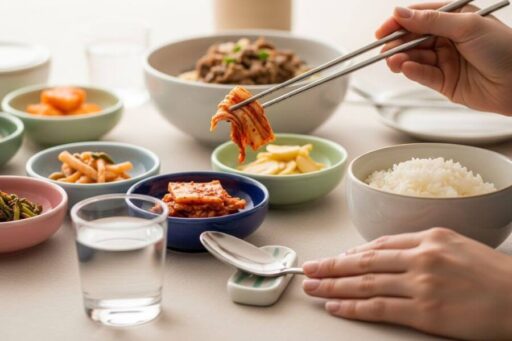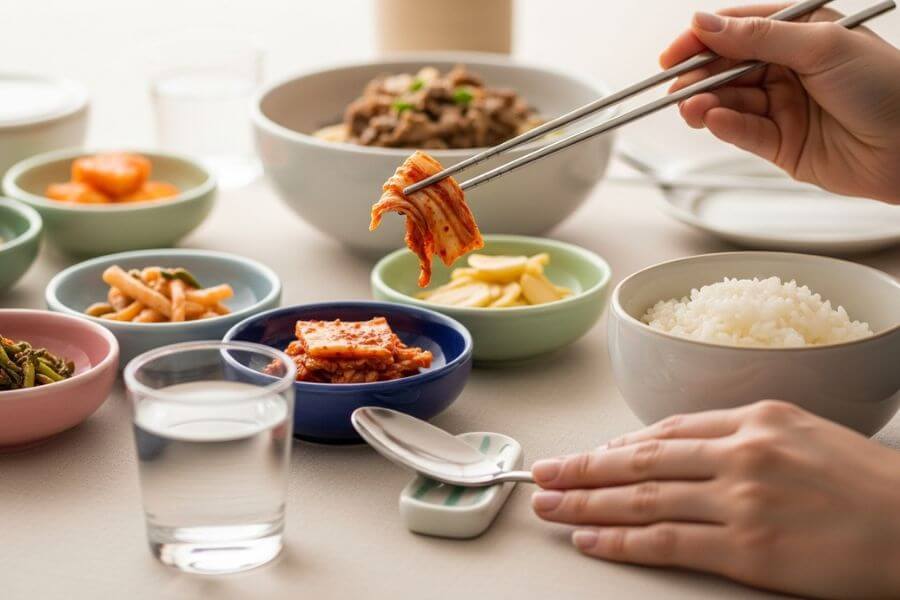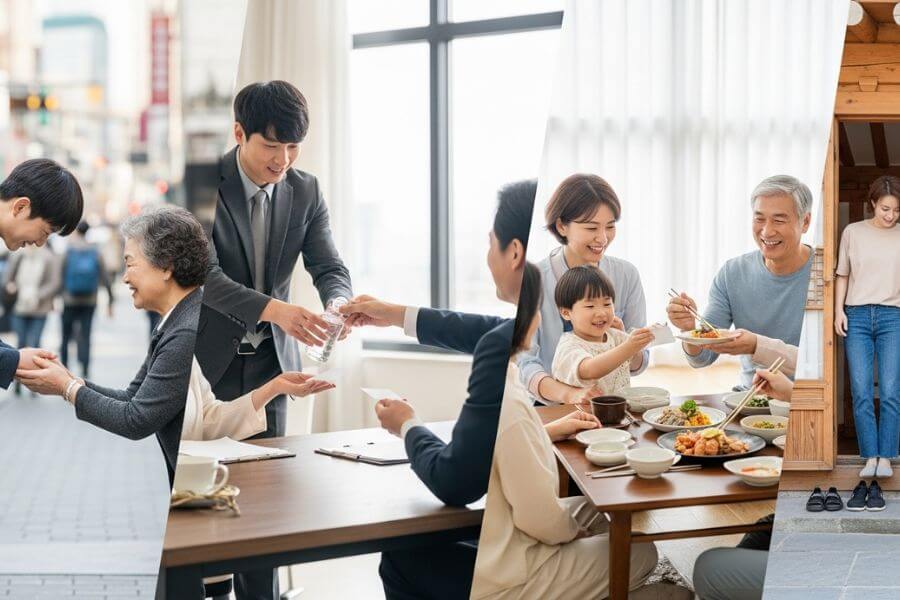If you’ve ever eaten with Koreans or plan to someday, there’s one thing you should know: dining etiquette really matters. In Korea, meals are more than just eating. They’re about showing respect, building relationships, and sharing a moment together. And honestly, once you understand the basics, everything feels smoother, warmer, and way more enjoyable.
The good news? Korean dining etiquette isn’t complicated. It’s really just a collection of thoughtful little habits that help create harmony at the table. In this guide, we’ll walk through the top 10 Korean dining etiquette rules, so you can feel confident the next time you sit down to enjoy Korean food.
1. Always Wait for the Eldest to Begin Eating
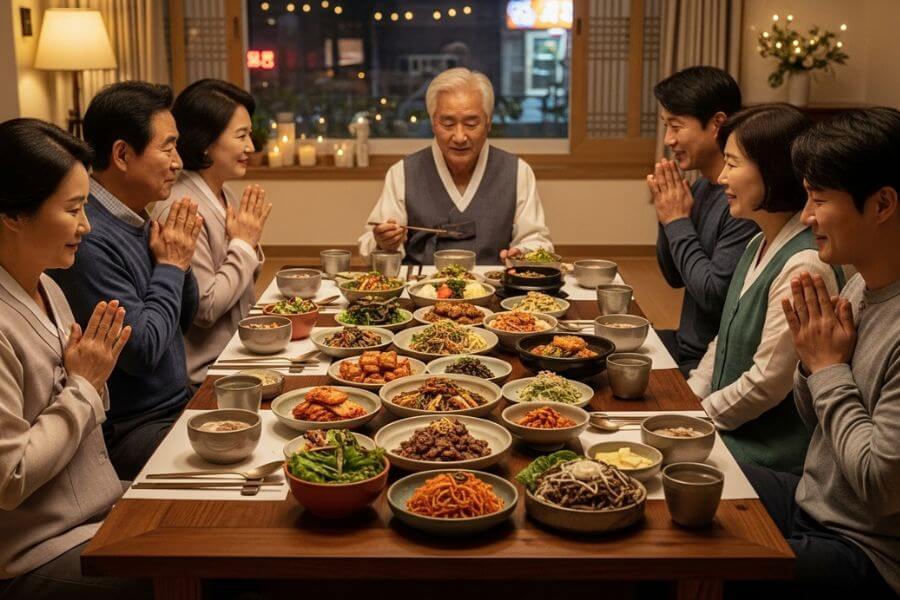
One of the biggest things you’ll notice in Korean culture is how much respect is shown toward age. That naturally extends to the dining table. When you sit down to eat, the most important rule is actually pretty simple: don’t start eating until the oldest person at the table takes the first bite.
Even if your stomach is growling and the food looks amazing, you wait. Most people will say a quick “잘 먹겠습니다!” (“I’ll enjoy this meal!”), but even after that, everyone keeps their chopsticks still until the eldest person begins. It’s a sign of respect and it sets a polite tone for the whole meal. It’s one of those small gestures that make a big difference.
2. Use Both Hands When Giving or Receiving Anything
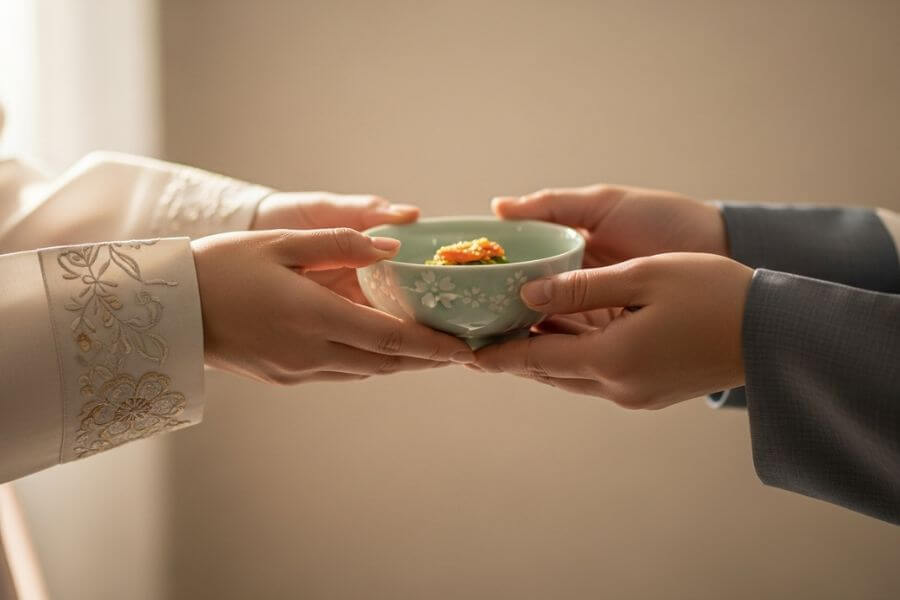
Another thing you’ll see right away is how often Koreans use both hands when exchanging items. When someone hands you a cup, gives you a dish, or pours you a drink, you should use both hands to accept it or at least support your right hand with your left.
Why? It’s simply seen as respectful, especially when interacting with someone older or in a higher position. If someone pours you a drink, hold your glass with both hands. If you’re passing a dish across the table, do the same. It’s a small detail, but Koreans notice it instantly, and it shows sincerity and good manners.
3. Pour Drinks for Others Before Yourself
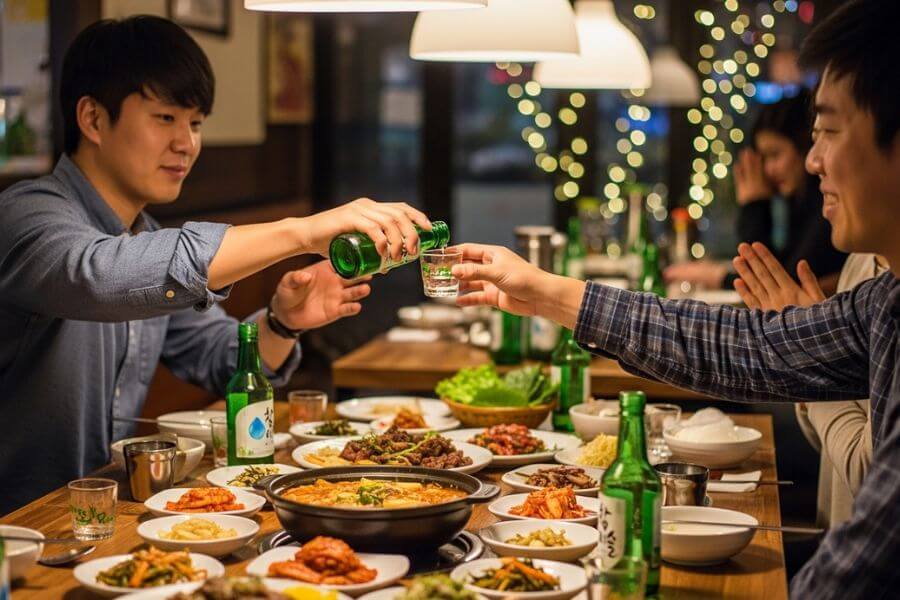
If you ever join a Korean work dinner (hoesik) or a casual get-together involving alcohol, this rule will come up quickly: don’t pour your own drink first. Instead, pour for the people around you, especially those who are older or more senior.
If someone pours your drink, it’s polite to return the favor a little later. This back-and-forth of pouring drinks reinforces a sense of connection and friendliness. And remember one more important detail: when drinking in front of elders, turn your head slightly to the side and cover your mouth. It’s considered polite and modest, even if it feels a bit unfamiliar at first.
4. Don’t Stick Chopsticks Upright in Your Rice

This one is a major rule, and definitely something to avoid. Never place your chopsticks standing upright in your bowl of rice. In Korea, this looks like incense sticks used during funeral ceremonies, and the gesture is associated with rituals for the deceased.
Doing this at the dinner table can feel unsettling or disrespectful to others, even if you didn’t mean anything by it. Instead, set your chopsticks down gently on a chopstick rest (if there is one), lay them across the bowl, or place them neatly on the table. Just keep them lying flat, and you’re good.
5. Keep Pace with Others, Especially the Elders
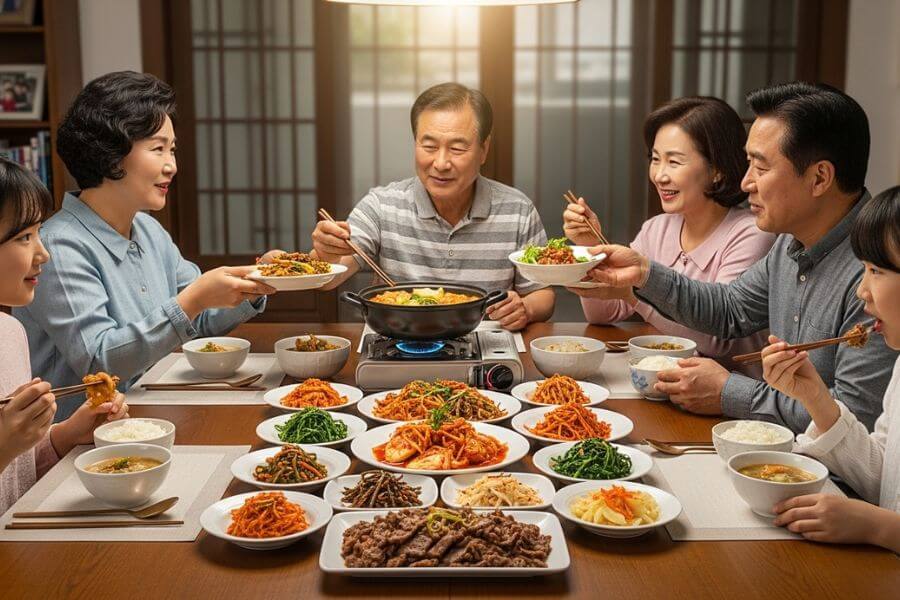
Because Korean meals are so communal, the way you eat also matters. One unspoken rule is to match your eating pace with everyone else, especially the oldest person.
Finishing way too fast can come across as rushed or even disrespectful, as if you’re not enjoying the meal together. Eating too slowly while others wait for you can feel inconsiderate. The idea is to keep a natural rhythm with the group so the meal feels shared rather than individual. It’s all about harmony.
6. Try a Little Bit of Everything on the Table
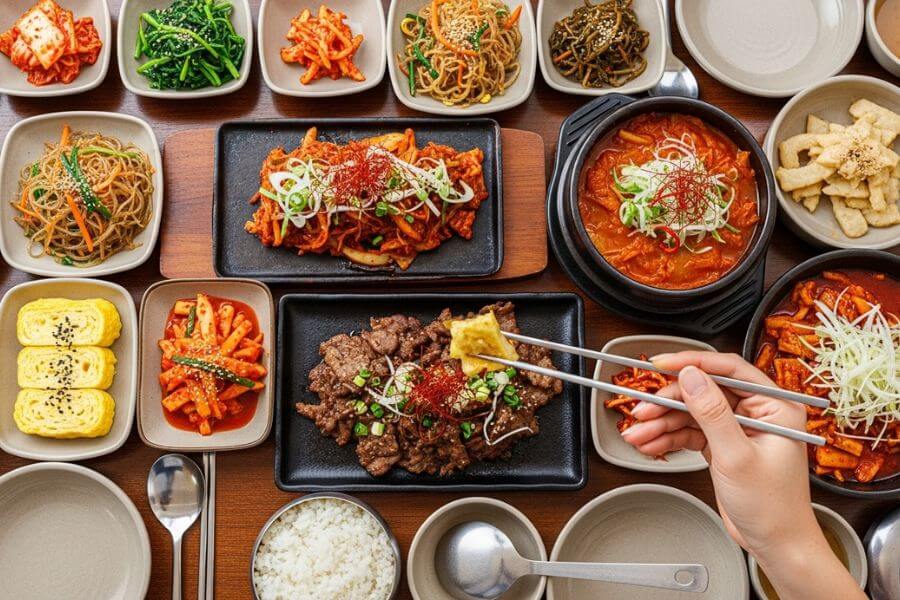
Korean meals come with tons of banchan (side dishes), and they’re meant to be shared by everyone. Since they’re placed in the middle of the table, it’s polite to try a little bit of each dish, even if you’re not familiar with it.
You don’t have to finish everything or pretend you love every single dish; you’re not expected to. But showing curiosity and trying a bite is considered thoughtful and respectful. And here’s a useful tip: don’t completely empty the side dishes unless the group agrees to order more. Leaving a little leftover lets the host know you’re satisfied, without making them feel like they need to refill everything.
7. Don’t Lift Your Rice Bowl While Eating
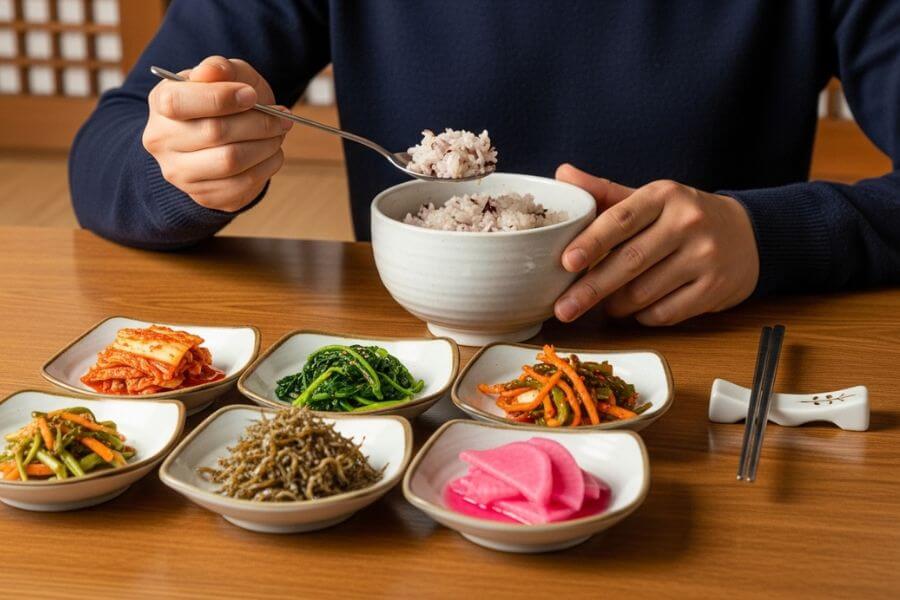
If you’re used to Japanese dining etiquette, you might naturally want to lift your rice bowl while eating. But in Korea, that’s not the norm. Bowls and plates should stay on the table. You should scoop rice with your spoon while keeping the bowl where it is.
Koreans use both spoons and chopsticks during meals, something fairly unique, and knowing when to use each is part of the etiquette. Use the spoon for rice and soups, and chopsticks for side dishes, grilled meats, noodles, and pretty much everything else. It shows you understand how Koreans structure their meals.
8. Be Mindful of Shared Dishes and Serving Utensils
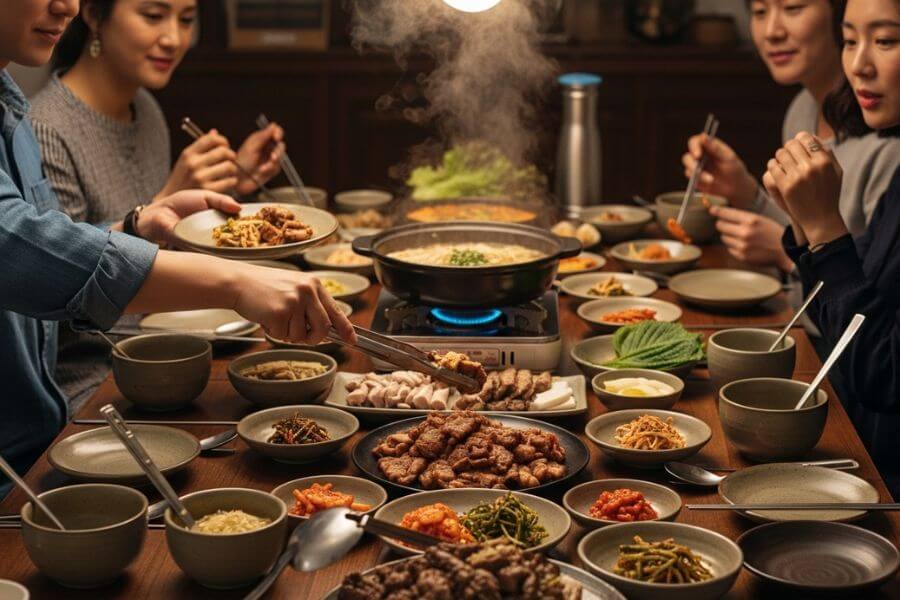
Because Korean meals are often served family-style, with multiple dishes placed in the center for everyone to share, being mindful of hygiene and etiquette is important. It’s considered polite to use serving utensils when taking food from shared dishes, especially for soups, stews, or items that come in large portions. Avoid using your personal spoon or chopsticks to reach directly into communal plates, as this helps keep the food clean and comfortable for everyone.
At Korean BBQ restaurants, for instance, it’s customary to use tongs or designated chopsticks to handle raw meat, keeping it separate from cooked food. Paying attention to these small details shows that you respect others at the table and that you understand the shared nature of Korean dining.
9. Offer Food to Others Before Serving Yourself
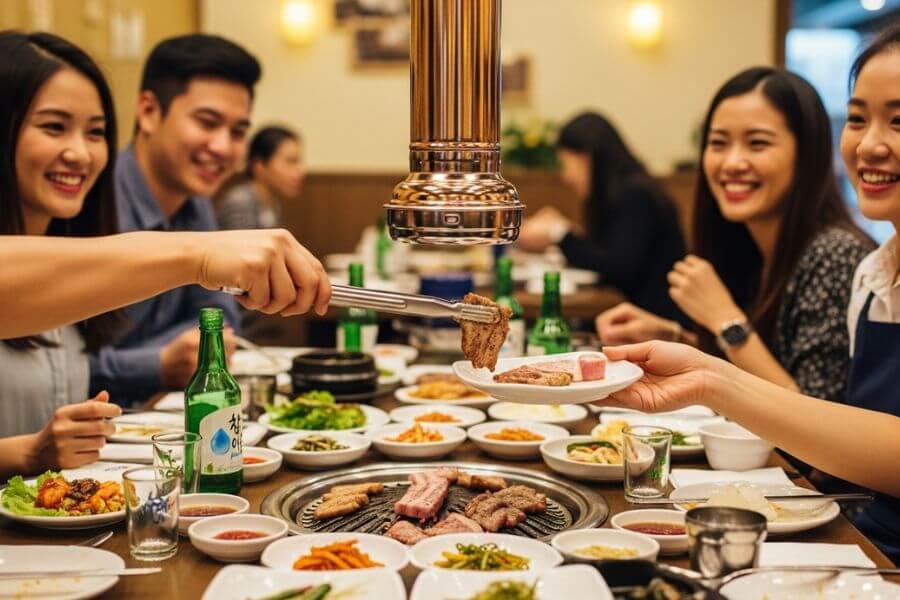
One of the most heartwarming parts of Korean dining culture is how people look after each other through food. You’ll often see Koreans making sure everyone else has enough before they start serving themselves.
For example, if you’re grilling meat at a Korean BBQ restaurant, it’s polite to help cook and place pieces of meat on others’ plates. You don’t have to fuss over everyone, but making a small effort to serve others first is seen as thoughtful. It embodies the spirit of sharing, which is a big part of Korean dining traditions.
10. Say “잘 먹었습니다” After the Meal
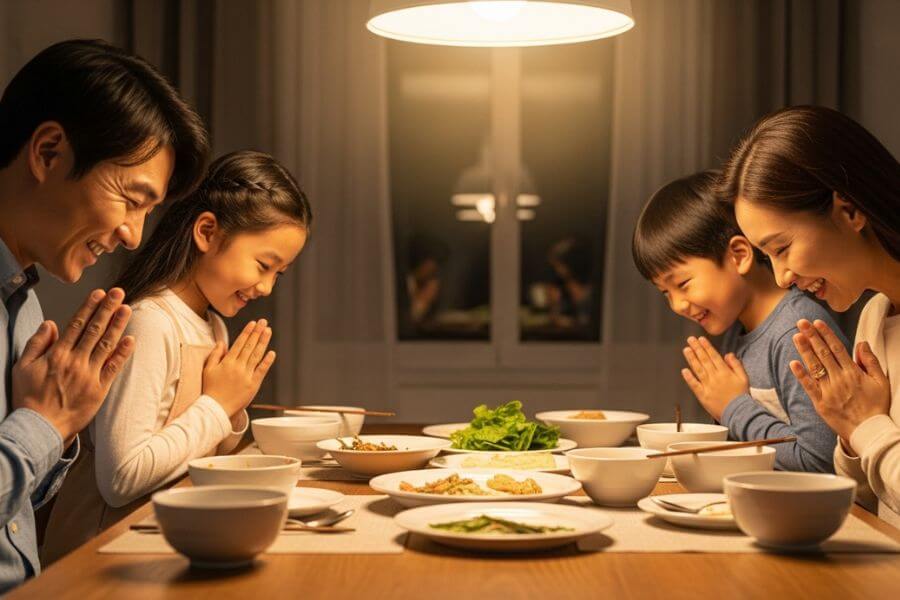
Just like meals begin with “잘 먹겠습니다”, they end with “잘 먹었습니다”, which means “I ate well” or “Thank you for the meal.” This phrase is simple, but it carries a lot of gratitude.
If someone cooked for you, hosted you, or paid for the meal, saying this at the end is the perfect way to show appreciation. It’s one of those little Korean phrases that instantly leaves a good impression and shows you respected the entire dining experience.
Conclusion
Korean dining etiquette is all about respect, thoughtfulness, and enjoying the meal together. While some habits might feel different from what you’re used to, none of them are difficult once you understand the meaning behind them. And when you follow these customs, the people you’re eating with will notice and genuinely appreciate it.
From waiting for elders to start eating, to offering food before serving yourself, to ending with a polite “잘 먹었습니다”, every gesture adds to a sense of harmony. Whether you’re traveling in Korea, dining with Korean friends, or simply enjoying Korean food anywhere in the world, these etiquette rules will help you feel more confident and connected.
At the end of the day, Korean dining is about more than food. It’s about sharing, respect, and creating a warm moment together.
